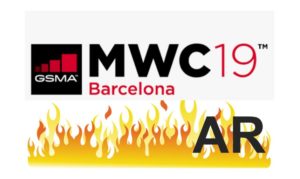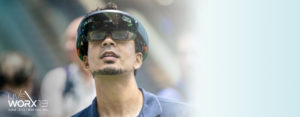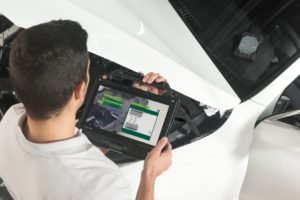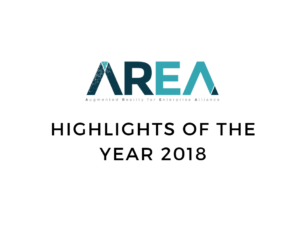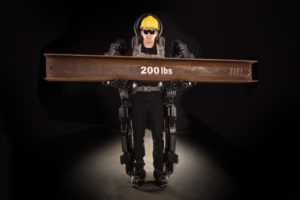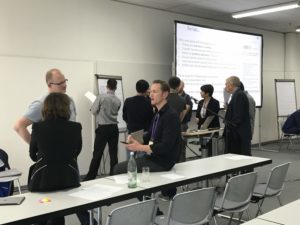AREA: How and when did Fieldbit originate?
RAPOPORT: My partners and I came from the world of industrial automation technologies. In 2013, Google Glass came out and we started to think about how this gadget could be used in an industrial setting. We had a feeling that this technology would have a significant impact on the way we work, especially in field services for the industrial world. Initially, our idea was to create procedures on smart glasses showing users how to repair complex equipment. After interviewing many prospective customers, we realized that converting existing procedures to smart glasses and an AR format would require considerable resources from the organizations themselves. What customers really needed was a way to assure that on-site fixes are completed by technicians on the first visit in order to avoid sending experts to resolve the problem. This could save everyone – vendors and customers – a lot of money. So we decided to develop a solution using Augmented Reality and smart glasses that would help the technician solve a complex technical problem by receiving augmented instructions from an expert. This was our first product – Fieldbit Hero – an end-to-end visual collaboration platform for field services.
AREA: In just five years, Fieldbit has developed a pretty comprehensive, integrated set of solution offerings.
RAPOPORT: After Fieldbit Hero rolled out to the market, we realized that remote assistance alone was not enough. Customers wanted to digitize the entire process of on-site service and repair. So we added Fieldbit Knowledge to capture on-the-job processes and share best working practices across the organization. Later, we also added Fieldbit Cosmic, which is used to augment real-time data from equipment and control systems or information from back office applications using Fieldbit’s SDK and APIs.
AREA: What distinguishes Fieldbit in the AR marketplace?
RAPOPORT: There are several key differentiators. First, we are focused solely on industrial field service applications. Second, we enable our users to build Augmented Reality online. This real-time capability is extremely important for field service. Our customers, like machine builders or technical service providers, don’t have hours, or even minutes, to prepare AR instructions. Their problems need to be fixed fast. This is our core strength – enabling users to immediately create AR and send it to a remote service technician or equipment operator. Third, Fieldbit allows customers to record the entire service process including all interactions and exchange of information, so they can analyze how the relevant service procedures were conducted and reuse this information. This enables Fieldbit users to capture the practical expertise of experienced technicians and share it across the organization. Capturing on-the-job knowledge is a tremendous asset for organizations looking for a way to preserve the knowledge of their aging field service workforce. Without such a solution, experienced technicians and experts would retire and their decades of accumulated knowledge would simply vanish.
AREA: In what industries have you seen the greatest traction to date?
RAPOPORT: We’re focused primarily on industries where sophisticated, complex equipment is installed, such as oil and gas exploration and production, industrial machine manufacturing and complex telecom installations. We’ve seen success, for example, in German-speaking countries with machine builders. In Germany alone there are around 6,000 industrial machine builders. We’ve also been expanding our presence in the US market, primarily in the energy sector.
AREA: Can you give us a few brief examples of Fieldbit customers and the benefits they have gained from your technology?
RAPOPORT: BP is a good example. BP’s Lower 48 division has a fully deployed Fieldbit solution being used by all of its field engineers. They operate in the upstream oil and gas market and have some 13,000 wells in the US. We started working with BP over two years ago. During that time, they’ve dramatically shortened the problem resolution cycle and reduced the number of travels of top-notch experts to remote sites. Using Fieldbit, BP’s experts guide field technicians to resolve the problem on the first visit. These factors have enabled BP to increase production.
We also work closely with equipment manufacturers. For example, Emerson Electric uses Fieldbit to support not only their engineers and technicians, but also their customers. When an equipment operator has a question, an Emerson subject matter expert in a support center can send the operator a link by text message or email and invite him or her to open a Fieldbit interactive session. The expert then guides the operator using Augmented Reality tools until the problem is resolved, without the need to dispatch an Emerson engineer to a remote site. With Fieldbit, many technical issues and even complex problems can be resolved remotely.
AREA: Tell us about your recent product announcement.
RAPOPORT: In December, we launched Fieldbit 5.0, a major new release. There are two key highlights in this release. First, we introduced new AR capabilities in our iOS application that combine image recognition with SLAM (Simultaneous Localization and Mapping) algorithms. This improves the AR user experience, making it more stable, vivid, and accurate. Second, we completely redesigned our mobile user interface. It’s very intuitive, so now mobile users can begin using the Fieldbit application immediately without any training.
AREA: What do you see as the greatest barriers to AR adoption?
RAPOPORT: We believe that smart glasses will eventually be the most useful smart device in field services. Using smart glasses, technical personnel can work hands-free, access information and get instructions from a domain expert. However, smart glasses are still cumbersome to wear and operate. In addition, optical limitations such as narrow field of view have not yet been resolved. That said, we are seeing significant progress in this area. I believe that when smart glasses become easier to use, with better optical functionality, we will see a leap forward in AR adoption.
AREA: What do you hope to gain by being a member of the AREA?
RAPOPORT: We look forward to participating in committees and exchanging views, knowledge and experiences with other AR providers and equipment manufacturers. We hope to learn from AR customers and other members about changing requirements. And we’re already taking advantage of AREA resources, such as reports and market studies.

